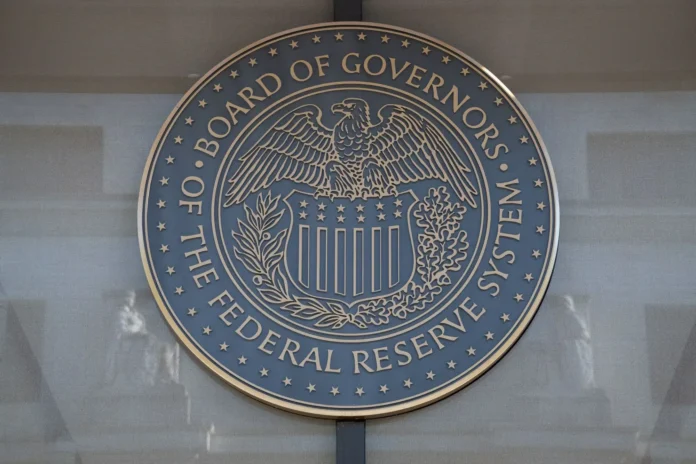This Content Is Only For Paid Member
In the realm of the global economy, few things hold as much significance as the price of money. While factors like the price of oil, semiconductors, or even a Big Mac might capture attention, the price of money, specifically interest rates, plays a pivotal role. For over three decades, interest rates were on a downward trajectory, but now they are heading upward. Most people attribute the setting of interest rates to central banks, particularly the Federal Reserve in the case of the United States. While this is true in terms of direct control over US interest rates, the underlying logic goes deeper. Like any other commodity, the price of money is fundamentally determined by the balance between its supply and demand. A surplus of savings pushes rates down while increasing investment demand drives them up.
Economically, the price of money that balances savings and investment while maintaining stable inflation is referred to as the “natural rate of interest.” Understanding this concept is central to policymaking. If the Federal Reserve were to set borrowing costs significantly below the natural rate, it would lead to excessive investment, insufficient savings, and an overheated economy with spiralling inflation. Conversely, setting borrowing costs above the natural rate would result in excessive saving, inadequate investment, and a cooling economy, leading to rising unemployment.
For more than three decades, US borrowing costs have been steadily declining. According to estimates adjusted for inflation, the natural rate of interest for 10-year US government bonds dropped from slightly above 5% in 1980 to just under 2% over the past decade.
To comprehend what drove this decline and to project the future trajectory of the natural rate, a model was constructed, taking into account the major factors affecting the supply of savings and investment demand. The dataset encompasses half a century and includes 12 advanced economies deeply embedded in the global financial system. The results show that one of the primary reasons for the decline in the natural rate was weaker economic growth. In the 1960s and 1970s, a burgeoning workforce and substantial productivity gains translated to nearly 4% average annual GDP growth, creating a strong incentive to invest and driving up the price of money.

However, by the 2000s, these driving factors had lost momentum. After the global financial crisis of 2007-08, annual GDP growth dropped to around 2%, leading to a weaker incentive for future investments and a subsequent decrease in the price of money.
Changing demographics also played a role. Starting in the 1980s, as the baby boomer generation began saving more for retirement, the supply of savings increased, further pushing down the natural rate.
Other factors contributed to this trend. On the savings front, China’s rapid economic growth led to increased savings invested in US government bonds. Meanwhile, in the US, rising income inequality meant that high earners saved a larger portion of their income, further boosting the supply of savings. On the investment side, the decreasing cost and increasing power of computers reduced the need for companies to invest heavily in technology, thus lowering investment demand and pushing down the natural rate.
This decline in the price of money had significant repercussions for the US economy. Low borrowing costs enabled households to take on larger mortgages, contributing to the subprime mortgage crisis and the global financial meltdown. Cheaper money also allowed the US federal debt to nearly triple from the early 2000s, with the cost of servicing that debt remaining low, facilitating government spending on various sectors.
For the Federal Reserve, the declining natural rate meant limited room for rate cuts during recessions, raising concerns about the diminishing effectiveness of monetary policy.
However, the tides are turning. Some of the forces that pushed the price of money lower are reversing, and new factors are coming into play. Demographics are shifting as the baby boomer generation exits the workforce, reducing the supply of savings. Geopolitical tensions and changes in China’s economy have halted the flow of Chinese savings into US Treasuries.
US debt has surged, and increasing competition for savings is putting upward pressure on long-term borrowing costs. The Inflation Reduction Act has further maintained the taps open for government spending.
The model suggests a potential rise of about one percentage point in the natural rate, from a low of 1.7% in the mid-2010s to 2.7% by 2050. This could translate into 10-year Treasury yields settling between 4.5% and 5% in nominal terms, with risks skewed toward even higher rates than the baseline projection.
In the absence of fiscal discipline, continued fiscal deficits, climate change investments, and technological advancements that boost productivity could further drive up the natural rate. These combined factors could potentially push the natural rate to 4%, resulting in a nominal 10-year bond yield of around 6%.
This shift from a falling to a rising natural rate will have profound consequences for the US economy and financial system. The era of rising house prices and soaring equity markets due to declining interest rates may come to an end. Homeowners, 401(k) equity investors, and the US Treasury should prepare for this transition.
Higher rates will have both winners and losers. Savers with bank accounts will receive higher returns, and bond investors will enjoy improved returns. A higher natural rate will also provide the Federal Reserve with more room to lower borrowing costs during recessions, restoring some of the lost potency of monetary policy. After years of declining rates, the US and the world need to brace for a significant reversal, impacting various aspects of the economy.
Methodology:
The model used to estimate the natural rate is a vector autoregressive model (VAR) with common trends, drawing inspiration from existing research. The model is supported by the belief that the natural rate is determined by fundamental economic factors, and actual borrowing costs will eventually return to the natural rate. Projections of the drivers are based on forecasts from the Bloomberg Economics team, focusing on long-term rates due to their significance in global markets.




